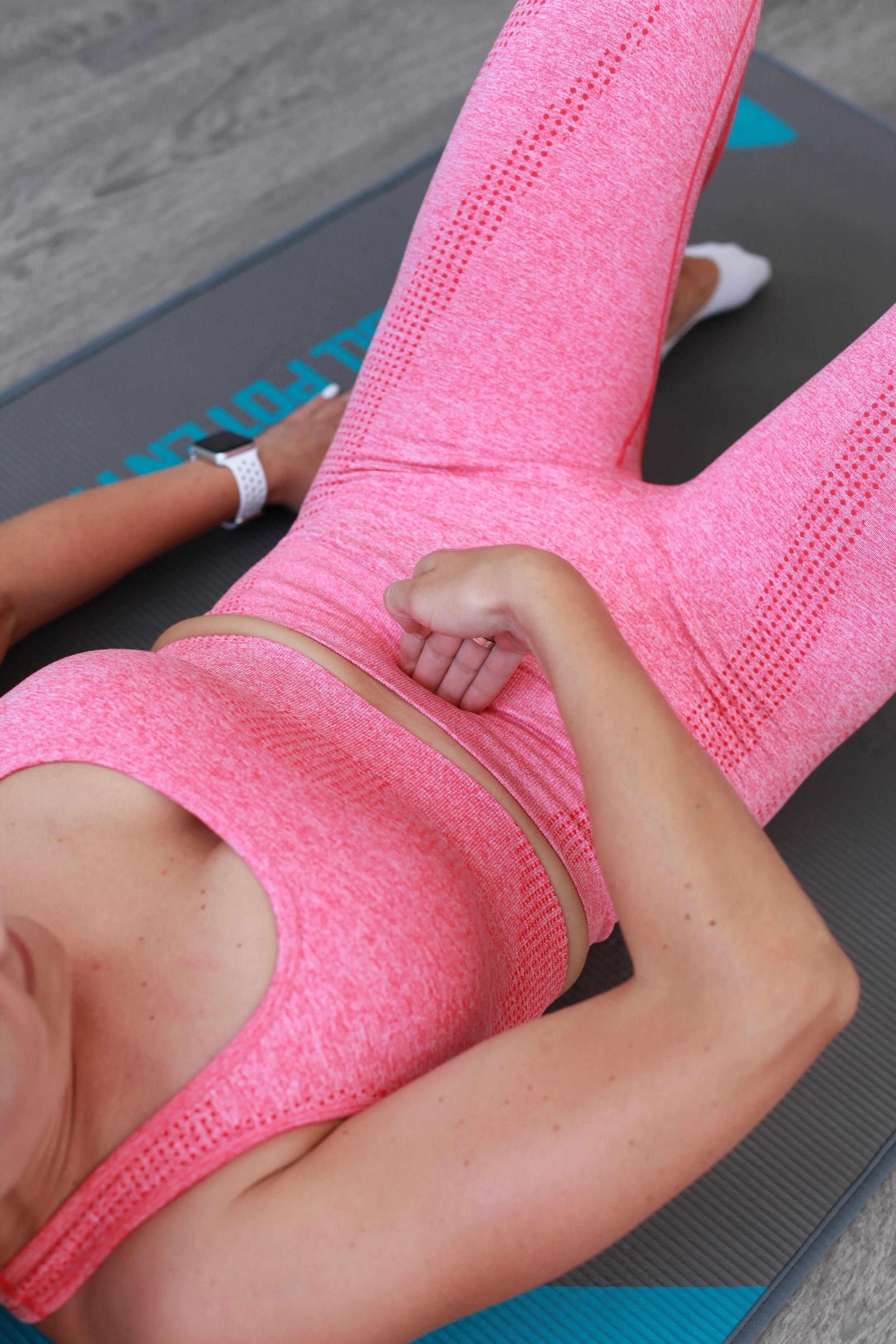Diastasis Recti
Diastasis recti is a condition in which the abdominal muscles separate, creating a gap between the left and right rectus abdominis “6-pack” muscles. The rectus abdominis muscles run vertically along the front of the abdomen and are responsible for flexing the spine and helping to support the abdominal organs. These muscles are held together by a connective tissue called the linea alba, which runs down the center of the abdomen. When the rectus abdominis muscles separate, the linea alba stretches and thins, creating a gap between the muscles. This gap can range in size from a small separation to a large one, depending on the individual and the severity of the condition.
What Are the Causes of Diastasis Recti?
The most common cause of diastasis recti is pregnancy. As the uterus expands to accommodate the growing fetus, the abdominal muscles are stretched and can separate. This condition is most common in women who are pregnant with multiple babies, have had multiple pregnancies, or are carrying a large baby. Additionally, women who have previously had diastasis recti are more likely to develop it again during subsequent pregnancies.
Diastasis recti can also occur in men and non-pregnant women due to factors such as obesity, poor posture, and certain exercises that put a lot of strain on the abdominal muscles. In men, diastasis recti can be caused by weightlifting and other exercises that target the abdominal muscles, especially when done in an improper form. In non-pregnant women, diastasis recti can be caused by rapid weight gain or loss, chronic coughing or sneezing, and other activities that put a lot of pressure on the abdominal muscles.
Do not panic though! Some degree of diastasis recti is actually a NORMAL and NATURAL part of pregnancy especially in the later stages, as the belly naturally expands to make room for the growing baby.
Symptoms of Diastasis Recti & How it Can Affect Your Body
The symptoms of diastasis recti vary depending on the severity of the condition. For most people, diastasis recti is not an inherently dangerous or harmful condition, and some may not experience any symptoms at all. However, others may experience frustrating side effects that are either cosmetic, functional, or both. Some of the most frequently occurring complications and signs of diastasis recti include:
A visible bulge or "pooch" that protrudes just above or below the belly button
Softness or jelly-like feeling around the belly button
Coning or doming when the ab muscles are contracted
Low back, hip, or pelvic pain
Poor posture
Pelvic floor weakness
Weakness in core strength and stability
Stress urinary incontinence
Constipation
Bloating
Hernia
Pain during sex
How Do You Self-Check for Diastasis Recti?
A self-check for diastasis recti can be done by following these steps:
Lie on your back with your knees bent and your feet flat on the floor.
Place your fingers just above your belly button, with your fingertips pointing down towards the floor.
Gently press down and exhale as you lift your head 1-inch off the floor, as if you were doing a mini crunch.
As you lift your head, check for the width and depth of the gap between the left and right sides of your rectus abdominis muscles (the "6-pack muscles"). Assess your entire midline (from sternum to a few inches below your navel).
The definition of a true diastasis recti is if the gap is greater than 2.7 cm (or 2 finger widths). It’s also important to assess the depth of the gap. Is it soft and deep or shallow and taut? A gap that is soft and deep would be more considered more severe because the linea alba tissue is more compromised.
If you do find a gap, it's important to consult with a healthcare professional for an accurate diagnosis and treatment plan. Keep in mind that self-diagnosis can be inaccurate and it's always best to seek professional advice.
How Can You Treat Diastasis Recti?
The good news is that the natural diastasis recti developed during pregnancy can heal within several weeks or months after delivery, especially with proper core recovery work. The first step in treating diastasis recti is to avoid exercises that put a lot of strain on the abdominal muscles. This includes traditional abdominal exercises such as crunches, sit-ups, leg lifts, V-ups, etc. that can cause coning or doming of the 6-pack abdominal muscles if they are not strong enough. The key is to focus on exercises that target the transverse abdominal muscles (TVA) and the pelvic floor muscles. These exercises help to strengthen and tone the muscles that stabilize the spine and support the abdominal organs, while also helping to improve posture.
Transverse abdominal exercises (TVA): These exercises target the transverse abdominal muscles, which wrap around the spine like a corset and provide support to the spine and abdominal organs. Examples of TVA exercises include pelvic tilts, heel slides, single knee lifts, single knee fall-outs.
Pelvic floor exercises: These exercises target the pelvic floor muscles, which support the pelvic organs and can help to improve bladder control.
Diaphragmatic breathing: This type of breathing helps to engage the transverse abdominal muscles and promote relaxation.
Core stability exercises: These exercises help to build stability and strength in the muscles of the core, which can help to improve posture and support the abdominal organs. Examples of core stability exercises include bird-dog and dead bug.
Stretching: Exercises such as the child's pose, cat-cow, and downward-facing dog can help to stretch and strengthen the muscles of the core, back, and pelvis.
It's important to start slowly and gradually increase the intensity and duration of the exercises as your body allows. It's also recommended to consult with a physical therapist or a healthcare professional who specializes in treating diastasis recti to ensure that you are using proper form and to create an individualized exercise plan that is tailored to your needs.
Diastasis recti can be improved, however under severe circumstances it may not completely go away. The severity of the condition and the individual's overall health can affect the potential for improvement. In some cases, surgery may be necessary to correct the separation. It's important to consult with a healthcare professional for proper diagnosis and treatment.






